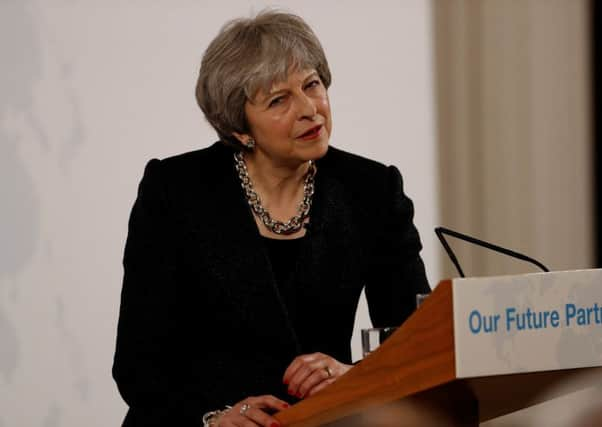May sets out Irish border ideas '“ but Varadkar demands more detail


In an apparent warning to hardline Brexiteers to temper their expectations, Mrs May used the high-profile address to acknowledge that neither side would get “exactly what we want” in talks on the future UK/EU relationship.
Among those reacting to her speech afterwards was Irish taoiseach Leo Varadkar, who said he still wants to see more “detailed and realistic proposals” from Mrs May.
Advertisement
Hide AdAdvertisement
Hide AdWith talks on the future relationship due to start this month and reach broad agreement by October, Mrs May on Friday offered reassurance to Brussels that she would not give in to calls from Brexit hardliners to walk away if things did not go her way.
“We will not be buffeted by the demands to talk tough or threaten a walk-out,” she said.
“Just as we will not accept the counsels of despair that this simply cannot be done.”
Mrs May used her keenly-awaited address at London’s Mansion House to expand on how she sees Brexit unfolding.
She said Britain is ready to:
Advertisement
Hide AdAdvertisement
Hide Ad• Allow UK courts to “look at” ECJ judgments, particularly where Britain and the EU have identical laws;
• Make “appropriate” financial contributions for associate membership of Europe-wide medicines, chemical and aerospace agencies;
• Develop a “labour mobility framework” to allow businesses and self-employed professionals to work across the UK and EU;
• Have “mutual recognition” in areas like regulation of goods, broadcast licences and professional qualifications;
Advertisement
Hide AdAdvertisement
Hide AdOn the Irish border specifically, she said: “Just as it would be unacceptable to go back to a hard border between Northern Ireland and Ireland, it would also be unacceptable to break up the UK’s own common market by creating a customs and regulatory border down the Irish Sea.
“We have thought seriously about how our commitment to a frictionless border can best be delivered. Option one is a customs partnership between the UK and the EU. At the border, the UK would mirror the EU’s requirements for imports from the rest of the world, applying the same tariffs and the same rules of origin as the EU for those goods arriving in the UK and intended for the EU.
“By following this approach, we would know that all goods entering the EU via the UK pay the right EU duties, removing the need for customs processes at the UK-EU border.”
Mrs May added that “option two would be a highly streamlined customs arrangement”.
Advertisement
Hide AdAdvertisement
Hide AdElaborating she said: “First, measures to ensure the requirements for moving goods across borders are as simple as possible. This means we should continue to waive the requirement for entry and exit declarations for goods moving between the UK and the EU.
“And we should allow goods moving between the UK and the rest of the world to travel through the EU without paying EU duties and vice versa.
“Second, measures to reduce the risk of delays at ports and airports. For example, recognising each other’s ‘trusted traders’ schemes and drawing on the most advanced IT solutions so that vehicles do not need to stop at the border.
“Third, we should continue our cooperation to mitigate customs duty and security risks.”
Advertisement
Hide AdAdvertisement
Hide AdShe went on to say “it is pragmatic common sense that we should work together to deliver the best outcome” for the EU and UK, ending with the words: “let’s get on with it”.
Reacting, Leo Varadkar said: “I remain concerned that some of the constraints of leaving the Customs Union and the Single Market are still not fully recognised.
“We will now need to see more detailed and realistic proposals from the UK. Brexit is due to happen in a little over 12 months, so time is short.”
Labour leader Jeremy Corbyn rubbished the address.
However, EU negotiator Michel Barnier welcomed it for offering “clarity” and recognising there will be “trade-offs”.